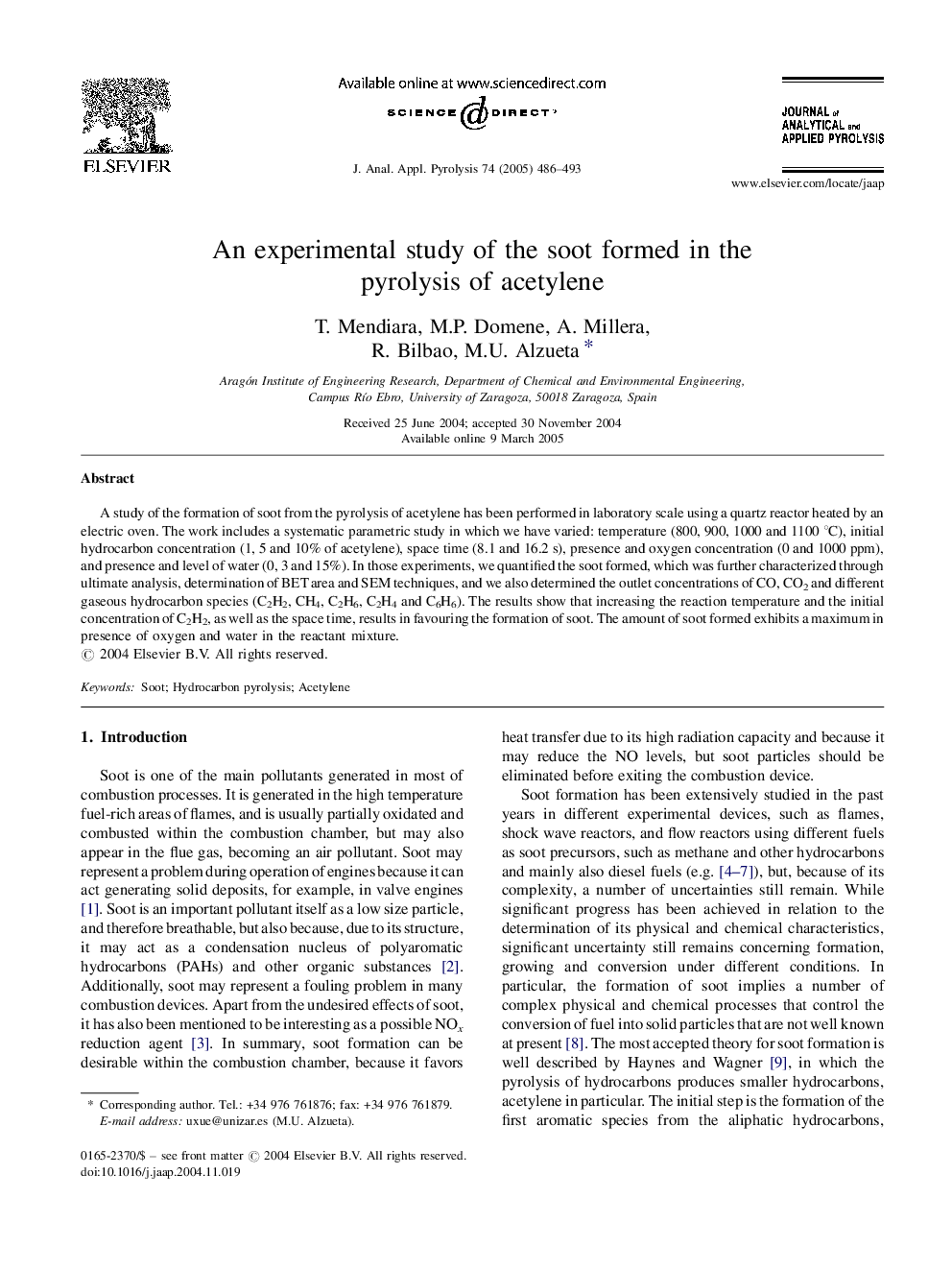| Article ID | Journal | Published Year | Pages | File Type |
|---|---|---|---|---|
| 9748225 | Journal of Analytical and Applied Pyrolysis | 2005 | 8 Pages |
Abstract
A study of the formation of soot from the pyrolysis of acetylene has been performed in laboratory scale using a quartz reactor heated by an electric oven. The work includes a systematic parametric study in which we have varied: temperature (800, 900, 1000 and 1100 °C), initial hydrocarbon concentration (1, 5 and 10% of acetylene), space time (8.1 and 16.2 s), presence and oxygen concentration (0 and 1000 ppm), and presence and level of water (0, 3 and 15%). In those experiments, we quantified the soot formed, which was further characterized through ultimate analysis, determination of BET area and SEM techniques, and we also determined the outlet concentrations of CO, CO2 and different gaseous hydrocarbon species (C2H2, CH4, C2H6, C2H4 and C6H6). The results show that increasing the reaction temperature and the initial concentration of C2H2, as well as the space time, results in favouring the formation of soot. The amount of soot formed exhibits a maximum in presence of oxygen and water in the reactant mixture.
Keywords
Related Topics
Physical Sciences and Engineering
Chemistry
Analytical Chemistry
Authors
T. Mendiara, M.P. Domene, A. Millera, R. Bilbao, M.U. Alzueta,
